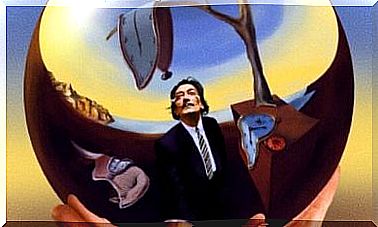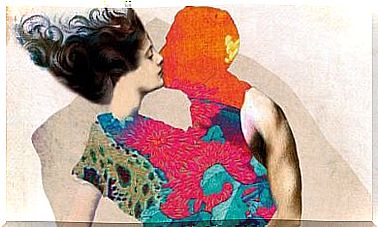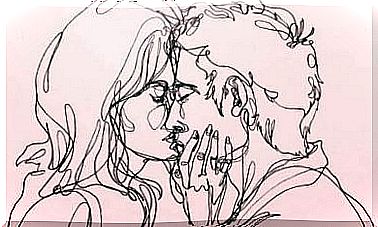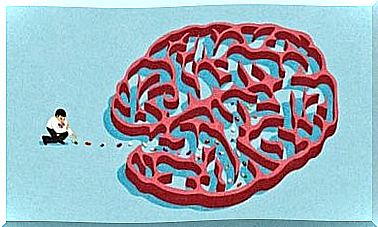Penfield’s Homunculus Represents The Brain In A Human Form
Our brains are very extraordinary. We’ve been researching them for years. We still haven’t managed to discover all their possibilities. They are like the universe, infinite and full of surprises. That may be why we are trying to simplify discoveries of new functions or areas in the brain. And that’s exactly what happened to Penfield’s homunculus, a very well-known representation of how the brain works.
Between 1940 and 1950, Dr. Wilder Penfield first referred to Penfield’s homunculus. This Canadian neurosurgeon was looking for explanations and treatments for neurological disorders such as epilepsy. Because the brain doesn’t feel pain, he gave electric shocks to different parts of his patients’ brains. The patients were awake during these shocks. He asked them what they felt then.
By applying these shocks, he discovered a small area in the brain where a sensory map of our body is located. This map reflects the sensitivity of every part of our anatomy. He decided to imagine this area as having a human form. That’s how Penfield’s homunculus came into being.
This view is special. Because it shows us that certain areas in our body are more sensitive to stimuli than other parts. The result is a distorted, disproportionate human being. The most sensitive areas are larger than the less sensitive areas. But this is not all. Shortly afterwards it was discovered that not only one person lives in our heads, but two. One is sensory and the other motor. Both are very different but also have some common points.
The Characteristics and Functions of Penfield’s Homunculus
So we now know that there are two Penfield homunculi, one sensory and one motor. Then let’s see if we can find out a little more about these performances.
The motor homunculus or the primary motor cortex
The motor homunculus or primary motor cortex is located just next to the sensory homunculus. We find it exactly in the central groove of the frontal cerebral cortex . This area is the most important part of the brain for the physical functioning of our body.
This part works together with other areas of the brain such as the supplementary motor cortex. And we also have to consider the fact that it gets input from the thalamus. The motor homunculus develops and carries out the bodily movements that our body makes. That is why its mode of action is somewhat different from that of the sensory homunculus. His mouth, eyes and especially his hands are huge. This is because the location of the receptors and motor nerves is much more unique.
A strange aspect of this zone is that it develops differently in each person. This means that the speed of his development is unique and personal. Because it depends on which body parts are used the most. In addition, there is another determinant: the extent to which they have better motor skills or training in general.
The sensory homunculus or the primary somatosensory cortex
The sensory homunculus, the primary somatosensory cortex for (it is the tactile sensitivity to pressure or pain in our body). This part is located in the parietal lobe of the brain , just where it connects to the frontal lobe. In other words, the sensory homunculus includes Broadman’s zones 1, 2, and 3.
In this part of the brain, the outline of our body is contralateral. Because it is sideways reversed. This means that the representation of the right hand of our body is in the left side of this brain region. The representation of the left hand is located in the right part of the brain.
We should also mention that this sensory zone receives the most information projection along the thalamus. The thalamus is the area that unites the different sensory resources of the brain. It ensures that we perceive our world in an integrated way and not in a separate way. This depends on the sensations that the brain perceives.
Moreover, the sensory homunculus is responsible for the perception of ourselves. In other words, it has the task of recognizing the state of our internal body.
All of this is important for our emotional well-being. That is also the reason that the lips and body ends are more sensitive. Caress, kisses and hugs are very important in terms of the universe of emotions we feel.
The phantom limb, the principal disease of Penfield’s homunculus
What happens if Penfield’s homunculus is affected in some way, sensory or motor? Then this leads to a strange condition: the phantom limb. When we suffer from this disease, the brain perceives the same sensations as those of an amputated limb.
A derivative of the phantom limb is the phantom pain. So what exactly happens with phantom pain? The sensory part of the brain that represents the amputated body part sends us pain sensations from the brain. Even if the limb is amputated, the neurons of the sensory homunculus continue to function. So this means that we continue to feel this limb. So here we see how a discovery driven by curiosity and using electrical stimulation of the brain has opened up a whole universe of possibilities. Thanks to all these results, we have come to realize how important every touch of the skin is in the brain and also for our emotional development.









